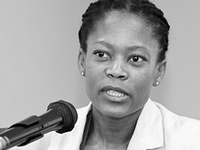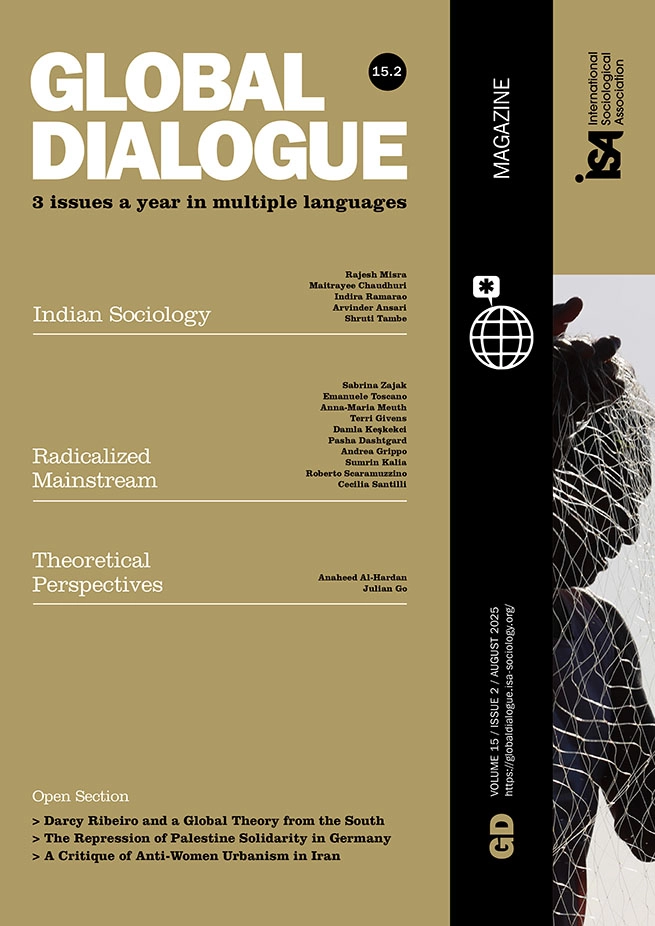Patricia Hill Collins is a Distinguished Professor of Sociology at the University of Maryland and former President of the American Sociological Association. A leading US social theorist, she is famous for developing the related ideas of “multiple oppressions,” “intersectionality,” and the “outsider within” first in her now classic Black Feminist Thought (1990) and then in Fighting Words (1998) and Black Sexual Politics (2006). Here we present an extract from a longer interview conducted by Labinot Kunushevci, an MA student at the University of Prishtina, Kosovo.
LK: From your perspective, what is the most appropriate theoretical and empirical methodology for research into the study of social inequality?
PHC: For me, I start with the study of the “dominant discourse” and the dominant discourse in the West consists of a constellation of knowledge projects that together constitute a seemingly hegemonic set of ideas and practices. This dominant discourse sets the terms of debate – what counts as important questions, what counts as evidence, as well as what can be ignored as secondary. In the United States, the dominant discourse is shaped by intersections of race, class, gender, sexuality, and nation as systems of power. In my work, I have investigated how racism, sexism, class exploitation, and heterosexism operate to shape the lived experiences of different social groups. Black women’s experiences were the point of entry into these larger questions of power and knowledge, but African-American women’s experiences are not the endpoint.
I approach African-American women as facing a set of social problems that are constructed at the intersection of multiple systems of power. Take violence, for example. Gendered domestic violence against Black women by their boyfriends, husbands, and fathers occurs in a context of state-sanctioned racial violence against Black people that is part of the legacy of slavery and racial discrimination. These two forms of violence gain meaning from one another – they are interconnected. My work on Black feminism examines how Black women intellectuals and activists such as Angela Davis, June Jordan, and Kimberlé Crenshaw, have consistently pointed out that the social problems faced by Black women could never be solved by looking to only one system of oppression alone. Using the particularities of African-American women’s experiences, Black feminist intellectuals raised the question of the simultaneity of oppressions, which in turn opened up a vibrant area of scholarship and politics that we now call intersectionality.
The combination of systems of power that shape a given society’s dominant discourse may vary. For example, the intersecting systems of power that I examine in the US – of race, class, gender, sexuality, and citizenship (nationality) – reflect the specific history of the US. My sense is that a very new nation such as your own that is just coming into being carries with it different intersections, for example, ethnicity, class, and religion, that have special salience in light of Kosovo’s history. It is important to remember that, regardless of different histories that reflect varying constellations of power relations, elite groups control both the overarching dominant discourse as well as the terms of knowledge that ensue. Groups may vary from one society to the next, but power relations of social inequality mean that not everyone has access to shaping the dominant discourse, although everyone in a society is influenced by it in some fashion.
The question of the most appropriate theoretical and empirical methodology reflects where one is located within the power relations of knowledge production generally, and which specific bodies of knowledge you wish to engage. In my case, I chose to engage in theoretical work, arguing that when you pay attention to the epistemological underpinnings of scholarship, you get closer to the heart of power. My theoretical work investigates varying dimensions of intersecting power relations, with special attention to how they shape knowledge. In this regard, the framework of intersectionality has been a useful analytic tool for examining social inequality, both within academic discourse as well as in politics.
LK: What is the role of media representation in women’s oppression and liberation, and how does it affect women’s participation in the public and political spheres?
PHC: All women experience media representations that present social scripts for how to be feminine. Yet because societies differ dramatically, the images of ideal women vary accordingly. In the United States and similar multicultural societies, media representations of women differ depending on varying combinations of race, gender identity, ethnicity, class and citizenship status. The white middle-class heterosexual woman holding US citizenship is held up as an ideal type for women from other groups. This is an ideal, a representation, a social construction and not an actual category of people. Traditionally, this feminine ideal was presented in the image of the stay-at-home mother, but more recently the image has been updated to include working women in high-powered jobs. Within a multicultural society, the closer other groups of women came to meeting that ideal, the more favorably they were judged.
In Black Feminist Thought, I examine how African-American women confront four main stereotypes: (1) the mule, the woman who works like an animal without complaint; (2) the jezebel, the highly sexualized woman who is often depicted as a prostitute; (3) the mammy, the Black woman domestic worker whose loyalty to her employer is beyond reproach; and (4) the Black lady, the educated Black woman who has given up family life in exchange for a career. But these representations are not simply benign stereotypes, anachronisms of past practices of racism, sexism, and class exploitation. Instead, these are controlling images because they provide social scripts for how people are expected to view and treat Black women. More importantly, they are the social scripts that Black women are expected to internalize.
Feminism and more broadly movements for women’s rights have aimed to disrupt both these representations and the power relations that they represent. When women reject the representations of themselves as idle housewives or as mules who should put up with low pay and no job security, or as loyal servants to male and female bosses across lines of race and ethnicity, they enter the public sphere with a greatly changed consciousness. In this sense, ideas and activism are intimately linked. Changing representations can change behavior, and changed behavior in turn fosters different beliefs about women in the public sphere.
Patricia Hill Collins <collinph@umd.edu>
Labinot Kunushevci <labinotkunushevci@gmail.com>





















